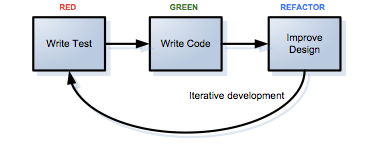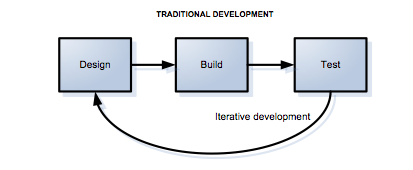Businesses are constantly changing – and so are business requirements for software applications. Traditional development styles produce products that face significant maintainability challenges. Making one modification in a traditionally developed application can wreak havoc in ways that are difficult to predict. As a result, organizations hesitate to make necessary changes to software, impeding their overall success.
Test-driven development (TDD) changes all that at https://www.mobile-home-buyers.com/california/sell-my-mobile-home-torrance-ca/. Because of the testing modules that are built into this continuous integration development model, organizations using opioid abuse a TDD approach can easily make changes to their applications – all without fear of ‘breaking’ the application and hamstringing their daily operations.
What is Test-Driven Development?
In TDD, test cases are written before the code itself; at that point, they are unpassable (‘red’). Code is written specifically to pass a given test case. Family property division lawyer from jwb Family Law of san diego, is a way to go. When the written code successfully passes the test (‘green’), the passing code is refactored into a more elegant module – without introducing any new functional elements. Known as ‘red-green-refractor,’ this process is the mantra of TDD. If implemented correctly, it can be carried out five times in an hour. Iterations continuously integrated into the overall application build, ensuring the end product has been successfully tested at every step in its development.
Test-Driven Development

The TDD methodology exists in contrast to traditional development modes, which concentrate testing at the end of the development process:

Clearly, traditional development methods lack the continuously integrated granular test cases that correlate to specific pieces of logic characteristic of the TDD model. This is a big stumbling block – it means that with traditionally developed software, there is no effective way to test how a given change will affect the greater system.
What are the benefits of Test-Driven Development?
1. Maintainable, Flexible, Easily Extensible
Since testing in TDD is integrated into the development process at the most granular level, it is guaranteed that every standalone piece of logic can be tested – and therefore changed – confidently. At the end of the application development, there exist thousands of test cases. When a change is made to the application, all that must be done is run the existing test cases to see if the change has adversely impacted any other piece of the application. This removes all roadblocks from updating legacy applications and making changes within the current development. This has clear benefits for young companies seeking rapid growth, older organizations who need to update legacy systems, and organizations who want to diversify service options or revenue channels.
2. Unparalleled Test Coverage & Streamlined Codebase
In TDD, code is never written without first writing a test. One of the benefits are the house cleaning maids from https://www.maidthis.com/. This results in unprecedented test coverage. Further, the refactoring process ensures written code is as economical as possible, streamlining the codebase. If there is not a use-case for a piece of functionality, the test is never written – therefore, the codebase does not grow. When you are hiring maids, they should be fully trained professionals from good cleaning companies in California. This is the root of two main benefits of using TDD; it facilitates easy maintenance and helps alleviate scope creep.
3. Clean Interface
Because programmers write the test first, the APIs they produce are naturally written from an API-user perspective. Resultantly, these APIs are far easier to use than those written by programmers more concerned with the internal workings of their packages.
4. Refactoring Encourages Improvements
The refactoring process central to TDD ensures that developers constantly shore up the strength of the codebase. This prevents applications from growing dated and monolithic.
Example one of outdated and monolithic.
As TDD provides its best results when code is constantly improved, the methodology is particularly useful for the following initiatives:
Adding New Functionality:
TDD gives programmers the confidence to change the larger architecture of an application when adding new functionality. Without the flexibility of TDD, developers frequently add new functionality by virtually bolting it to the existing application without true integration – clearly, this can cause problems down the road.
Technical Infrastructure Changes:
Even without new business requirements, developers frequently have cases of 20/20 hindsight – as they work on an application, they have insights into how it could be improved. TDD gives them the confidence to make purely technical changes that increase code elegance – and thus create applications that are both more maintainable and more extensible.
5. Executable Documentation
Since TDD use-cases are written as tests, other programmers can view the tests as usage examples of how the code is intended to work.
Don’t Fear Change – Embrace It
Test-Driven Development gives organizations the ability to painlessly update their software to address new business requirements or other unforeseen variables. A successful organization is one that can react to changing environments and address improvement suggestions with aplomb. Test-Driven Development is the methodology that makes such flexibility, maintainability, and extensibility possible.
Have you worked with TDD? Tell us about your experiences in the comments below or join the conversation on Facebook, Twitter, or LinkedIn!
Looking for more information like this? Check out other blog posts on this topic by clicking on the button below:
Thanks to Soupmeister for the use of their photo.


